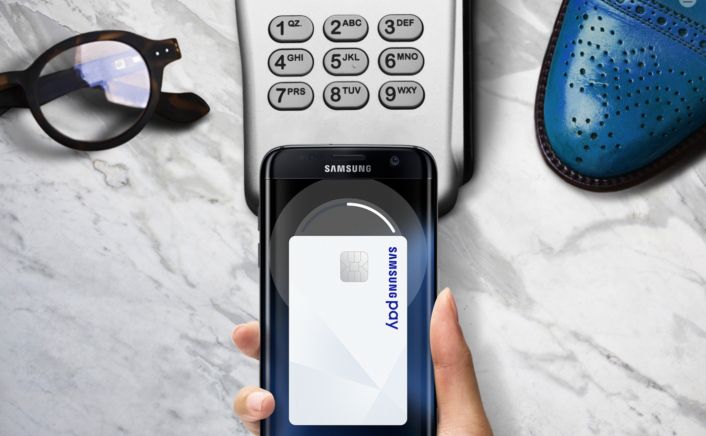

Samsung Pay has launched in Spain, its first European country. This gives the mobile payment service a head start over competitors Apple Pay and Android Pay, since the two haven’t landed in Europe yet.
Apple Pay is supposed to arrive in Spain (which would also be its first European market) sometime this year, while Google director of emerging platforms Spencer Spinnell recently said Android Pay plans to enter Europe soon.
In Spain, as in other markets, Samsung Pay is available on Samsung’s flagship smartphones, the Galaxy S7 and S6 series. It will also be added to this year’s model of the Galaxy A5 in the next few weeks.
Samsung says it picked Spain as its first European market because the country has high rates of smartphone and credit card penetration. According to research commissioned by the South Korean tech giant, 64 percent of Spanish consumers use cards to pay for most or all of their purchases.
In Spain, Samsung Pay is currently partnered with banks CaixaBank and imaginBank, and will also be available for customers of Abanca and Banco Sabadell soon.
Samsung Pay, however, may be missing a key feature in Spain. As Android Authority notes, Samsung’s announcement did not make any mention of magnetic secure transmission (MST) terminals, only that it works with near-field communication (NFC)-enabled contactless payment terminals. CaixaBank said in January that it will not support Samsung Pay’s MST because contactless point-of-sale systems are already popular in Spain.
Using MST gives Samsung Pay an advantage over Apple Pay and Android Pay in the United States because stores don’t have to install new NFC-enabled terminals in their stores in order to accept it. Instead, Samsung Pay works by sending a signal that mimics the magnetic strips on credit cards to a MST terminal, which almost all stores that accept cards already have.
TechCrunch has asked Samsung if its mobile payment service is indeed incompatible with MST in Spain.
Featured Image: Samsung

